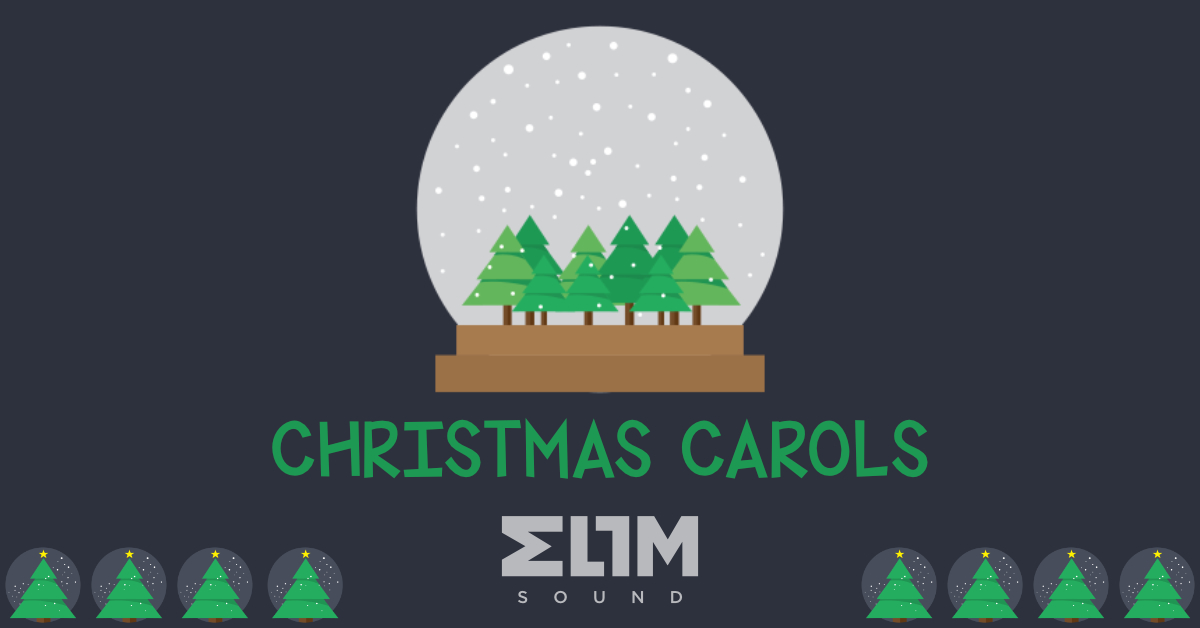
What are your favourite carols?
According to Classic FM these are the top 5 carols in the UK.
5. O COME ALL YE FAITHFUL
This carol was originally written in Latin as Adeste Fiddles. It has been attributed to various authors, including John Francis Wade (1711–1786), with the earliest copies of the hymn all bearing his signature, John Reading (1645–1692) and King John IV of Portugal (1604–1656).
The original four verses of the hymn were extended to a total of eight, and these have been translated into many languages.
The English translation of "O Come, All Ye Faithful" by the English Catholic priest Frederick Oakeley, written in 1841, is widespread in most English speaking countries. The present harmonisation is from the English Hymnal (1906).
4. IN THE BLEAK MIDWINTER (HOLST VERSION)
Did you know there are a few versions of this much loved carol?
Holst comes out on top in the battle of the Bleak Midwinters, with his setting from 1906, written 3 years before Darke's version.
The carol was based on a poem by the English poet Christina Rossetti written before 1872 in response to a request from the magazine Scribner's Monthly for a Christmas poem.
It was published posthumously in Rossetti's Poetic Works in 1904.
3. HARK! THE HERALD ANGELS SING
This much loved carol first appeared in a 1739 collection of Hymns and Sacred Poems, having been written by Charles Wesley.
Wesley had requested and received slow and solemn music for his lyrics, not the joyful tune expected today. Moreover, Wesley's original opening couplet is "Hark! how all the welkin rings / Glory to the King of Kings".
The popular version is the result of alterations by various hands, notably by Wesley's co-worker George Whitefield who changed the opening couplet to the familiar one, and by Felix Mendelssohn. In 1840, a hundred years after the publication of Hymns and Sacred Poems, Mendelssohn composed a cantata to commemorate Johann Gutenberg's invention of the printing press, and it is music from this cantata, adapted by the English musician William H.
Cummings to fit the lyrics of “Hark! The Herald Angels Sing”, that propels the carol known today.
2. O HOLY NIGHT
"O Holy Night" (French: Cantique de Noël) is a well-known Christmas carol composed by Adolphe Adam in 1847 to the French poem “Minuit, chrétiens" (Midnight, Christians) by a wine merchant and poet, Placide Cappeau (1808–1877).
In Roquemaure at the end of the year 1843, the church organ was recently renovated. To celebrate the event, the parish priest asked Cappeau, native from this town, to write a Christmas poem, even though the latter never showed an interest in religion, and Cappeau obliged.
Soon after, Adam wrote the music. The song was premiered in Roquemaure in 1847 by the opera singer Emily Laurey.
Unitarian minister John Sullivan Dwight, editor of Dwight's Journal of Music, created a singing edition based on Cappeau's French text in 1855. In both the French original and in the two familiar English versions of the carol, as well as many other languages, the text reflects on the birth of Jesus and of humanity's redemption.
1. SILENT NIGHT
Silent Night" (German: Stille Nacht, heilige Nacht) is a popular Christmas carol, composed in 1818 by Franz Xaver Gruber to lyrics by Joseph Mohr in the small town of Oberndorf bei Salzburg, Austria. It was declared an intangible cultural heritage by UNESCO in 2011.
The song has been recorded by a large number of singers from every music genre. The version sung by Bing Crosby is the third best-selling single of all-time.
‘Silent Night’ has been translated into 140 languages.
The song was first performed on Christmas Eve 1818 at St Nicholas parish church in Oberndorf, a village in the Austrian Empire on the Salzach river in present-day Austria. A young priest, Father Joseph Mohr, had come to Oberndorf the year before. He had already written the lyrics of the song "Stille Nacht" in 1816 at Mariapfarr, the hometown of his father in the Salzburg Lungau region, where Joseph had worked as a co-adjutor.
The melody was composed by Franz Xaver Gruber, schoolmaster and organist in the nearby village of Arnsdorf. Before Christmas Eve, Mohr brought the words to Gruber and asked him to compose a melody and guitar accompaniment for the church service. Both performed the carol during the mass on the night of December 24.
The original manuscript has been lost. However, a manuscript was discovered in 1995 in Mohr's handwriting and dated by researchers at c. 1820. It shows that Mohr wrote the words in 1816 when he was assigned to a pilgrim church in Mariapfarr, Austria, and shows that the music was composed by Gruber in 1818. This is the earliest manuscript that exists and the only one in Mohr's handwriting.
The first edition was published by Friese (de) in 1833 in a collection of Four Genuine Tyrolean Songs.
Questions: What are your top 5 carols? Leave a comment below.